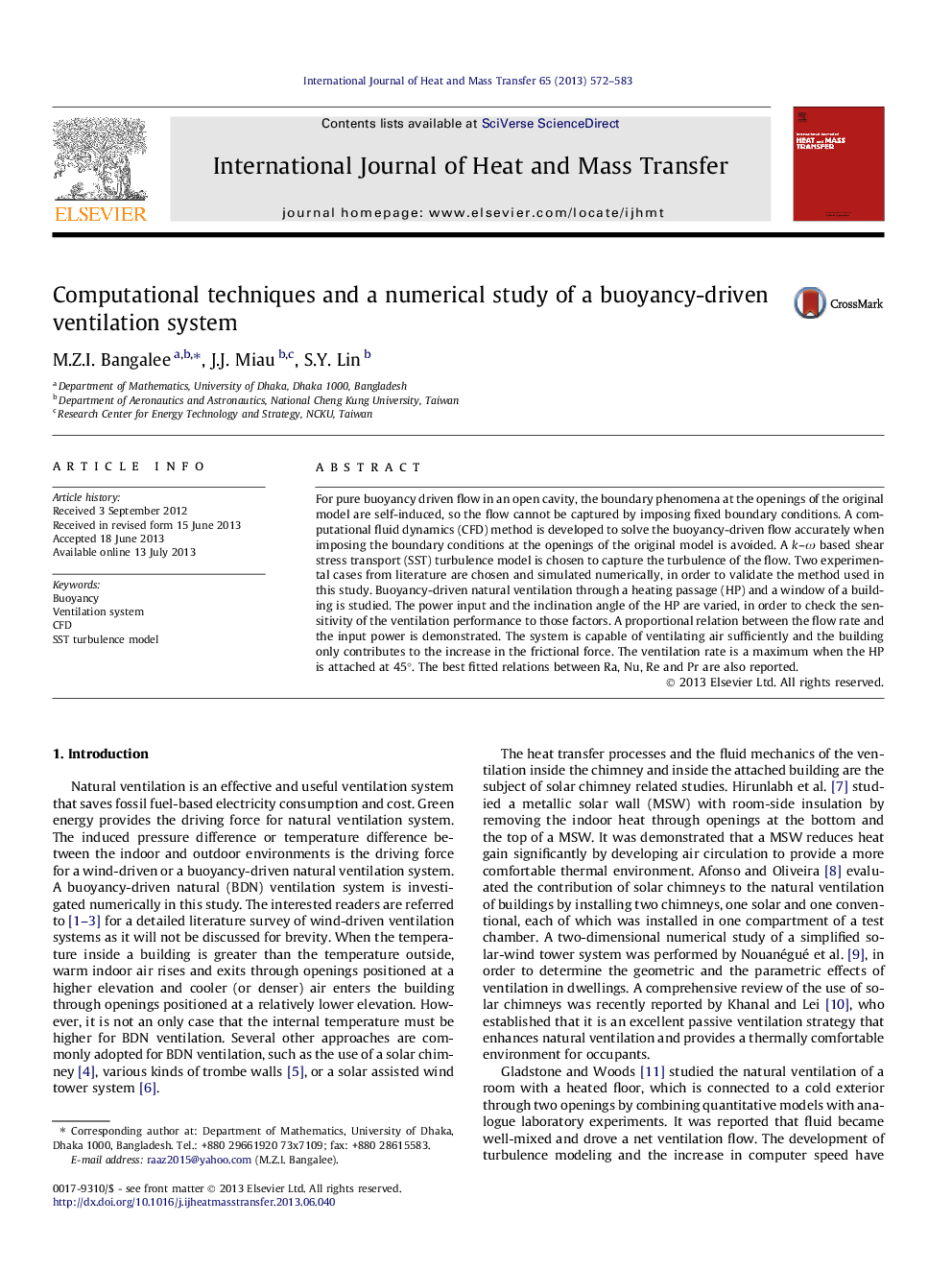| Article ID | Journal | Published Year | Pages | File Type |
|---|---|---|---|---|
| 7058649 | International Journal of Heat and Mass Transfer | 2013 | 12 Pages |
Abstract
For pure buoyancy driven flow in an open cavity, the boundary phenomena at the openings of the original model are self-induced, so the flow cannot be captured by imposing fixed boundary conditions. A computational fluid dynamics (CFD) method is developed to solve the buoyancy-driven flow accurately when imposing the boundary conditions at the openings of the original model is avoided. A k-Ï based shear stress transport (SST) turbulence model is chosen to capture the turbulence of the flow. Two experimental cases from literature are chosen and simulated numerically, in order to validate the method used in this study. Buoyancy-driven natural ventilation through a heating passage (HP) and a window of a building is studied. The power input and the inclination angle of the HP are varied, in order to check the sensitivity of the ventilation performance to those factors. A proportional relation between the flow rate and the input power is demonstrated. The system is capable of ventilating air sufficiently and the building only contributes to the increase in the frictional force. The ventilation rate is a maximum when the HP is attached at 45°. The best fitted relations between Ra, Nu, Re and Pr are also reported.
Related Topics
Physical Sciences and Engineering
Chemical Engineering
Fluid Flow and Transfer Processes
Authors
M.Z.I. Bangalee, J.J. Miau, S.Y. Lin,
